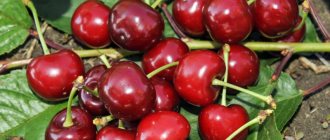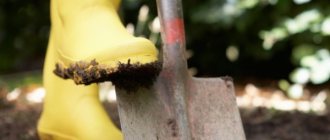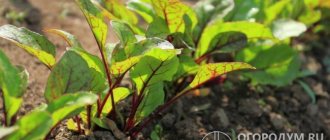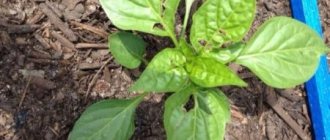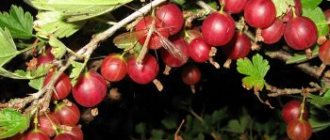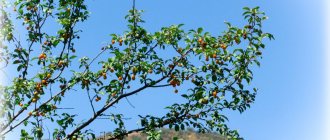Peaches for the Moscow region - the best varieties with descriptions and photos for growing in the central region
Some time ago, peaches and nectarines for the Moscow region were rare plantings in this territory. They served more of a decorative function. Now more and more gardeners dare to grow peaches in the Moscow region, getting a sweet, juicy, decent harvest. However, to get it, you need to choose the most suitable varieties. The article presents the best varieties of peach and nectarine for the Moscow region.
The content of the article:
Columnar varieties of peaches for the Moscow region Peach "Steinberg" "Souvenir" "Capital Anniversary" Self-fertile peach varieties for the Moscow region "Kievsky Early" "Early Champion" "Greensboro" "Souvenir" "Golden Triumph" Winter-hardy peach varieties for the Moscow Region "Carnival" "Pontic" “Golden Moscow” “Novoselkovsky” “Saturn” Low-growing peach varieties for the Moscow region “Balconella” “Bonanza” “Sweet Cap” “UFO-3” Nectarines for the Moscow region “White Swan” “Golden Jubilee” “Juicy” Reviews on growing peaches and nectarines for the Moscow region
Selection rules
The climate of the Moscow region is moderately continental, with relatively mild winters and warm, relatively humid summers. It is not too difficult to choose a variety of nectarine or peach for the Moscow region. It is important to pay attention to the type of rootstock, as well as the ripening period of the variety of this fruit crop.
The best varieties for this cultivation region are characterized by early and mid-early crop formation, and also have sufficient resistance to low temperature conditions in winter and late spring frosts. It is recommended to purchase high-quality peach seedlings for the Moscow region, as well as nectarine seedlings, from nurseries that sell zoned varieties.
Columnar varieties of peaches for the Moscow region
Columnar ones are often chosen for their unusualness, decorativeness, and neatness. Indeed, for those who want to decorate their garden plot, the columnar peach for the Moscow region is the best option.
Moscow region peaches. Garden rejuvenation - year two - video
Peach "Steinberg"
The peach, unique in its appearance, can be easily distinguished from other varieties by its long, refined pyramid-shaped crown. As a rule, it is located at a height of 2 meters above the ground. At this height, its diameter is 40-50 cm.
Photo of peach variety "Steinberg"
The fruits are round, slightly flattened, weighing 150 g. The color is yellow with a rich crimson blush. Classic peach aroma. Can grow in areas with little sunlight. This variety is popular among gardeners.
Variety of columnar peaches “Souvenir”
The homeland of this variety is Crimea. The average height of an adult tree is approximately 2 meters. This is also a popular variety of peaches. It has a neat and compact crown, elongated upward.
The fruits are quite heavy, weighing about 200 grams. Already in the first week of August, peaches are at the stage of technical ripeness. The peel has a rich, bright, yellow color. The pulp is juicy, tender, not watery.
"Capital Anniversary"
The height is the same as other columnar varieties. The bushiness of the crown is average. The main advantage of the variety is increased immunity. Withstands temperature changes well, including significant ones. Not affected by fungus or parasites.
The fruits are yellow-pink. There is dense flesh inside. Fruit weight – 230 g. The yield from one planted tree is about 10 kg. This variety of columnar peach for the Moscow region is suitable for those who want to harvest faster. The fruits are ready for harvest in mid-summer.
Preparing for landing
Peaches in the Moscow region are planted in the spring, but preparations for planting begin in the fall. The soil in the selected area is cleared of weeds and carefully dug up with the application of fertilizers. If the soil is acidic, then when digging, add dolomite flour at the rate of 300-400 g per 1 square meter. m. Next, they dig holes measuring 70*70*70 cm. A drainage layer is laid at the bottom of the hole, then covered with a soil mixture of garden soil with humus and wood ash.
Seedlings are selected by carefully examining the branches and roots. The root system can be open or closed in a container. There should be no rotten areas or signs of disease on all parts of the plant. Roots and shoots should be elastic and alive.
- Before planting, the exposed roots of the seedlings are immersed in water for 2-3 hours and then dipped in a clay mash. Seedlings in containers are watered, then they are easily taken out of the container along with a lump of earth.
- A peg is driven into the center of the planting hole for support. Place the seedlings and straighten the roots if they are open.
- The roots of the seedlings are covered with soil, the soil is carefully compacted, watered well and tied to a support.
- Mulch the root zone with sawdust, dry grass or fallen leaves.
Caring for peach trees in the Moscow region is quite simple. You should follow all the recommendations in a timely manner, and then enjoy the harvest of sweet and juicy fruits.
During the first years of life, seedlings must be watered regularly. Mature trees require 40-50 liters of water per tree. In dry summer weather, watering should be increased. It is necessary to monitor the condition of the soil; excessive watering can harm the tree. 10 days before the fruits ripen, watering is stopped; in dry weather, the crown is sprinkled.
It is necessary to regularly and promptly remove weeds, loosen and mulch the root zone using sawdust, straw or dry fallen leaves.
In the second season of the tree’s life, it’s time to start fertilizing three times a season. In spring, fertilize with nitrogen complexes. In summer and autumn, the tree needs a predominance of potassium and phosphorus.
Sanitary and shaping trimmings are made in the spring after dismantling the shelter. It is customary to cut off excess ovaries from a young tree so that the fruits that have ripened in excess do not break off the branches with their weight.
In the fall, pruning is done, leaving 3-4 shoots from below on the trunk, so the tree will be prepared for winter.
Diseases and pests
Peache varieties suitable for cultivation in the Moscow region usually have increased resistance to common diseases and pests. But for prevention in early spring, after dismantling the shelter, the trees must be treated with a 3% solution of Bordeaux mixture. After the ovary has formed, the trees are treated with an appropriate fungicide.
Read also: How to raise Big 6 turkey poults at home
A good prevention against harmful insects is to whitewash the tree trunk with lime in the spring.
Young trees especially need to be wrapped for the winter. It is necessary to do autumn pruning, fertilizing, and mulch the root zone. If the tree is low, the branches become tied and bend toward the ground. Next, the tree is wrapped in special material. After the onset of persistent spring warmth, the shelter is dismantled.
To successfully grow peaches in the Moscow region, you should pay special attention to the following points:
- Choose the right peach variety suitable for growing in the Moscow region.
- To plant a peach, find a place that meets the criteria.
- Plant the peach according to the instructions.
- When growing peach, follow the care instructions.
- Be sure to cover peaches for the winter.
Self-fertile peach varieties for the Moscow region
These varieties of peaches for the Moscow region are good because they do not require pollination. For them, the weather does not really matter, because self-pollination occurs regardless of it, at any time. They don't even require cross-pollination.
Peach "Kyiv early"
A very good and unpretentious variety of self-fertile peach for the Moscow region. It quickly adapts to any new conditions and climatic “whims”. It is a good place to start getting acquainted with peach culture because it is easy to care for.
Height up to 3 meters. The crown is in the shape of a semicircle. The fruits are even, round in shape, with smooth skin. Weight – 80 gr. The peel is light yellow, thin. You can see a pink tint on it. There is juicy pulp inside.
Peach varieties for the Moscow region: winter-hardy and frost-resistant
Winter-hardy peach varieties for the Moscow region are distinguished by their ability to withstand especially cold winters. The yield remains at the same level.
Peach "Carnival"
The height of the tree is average, the crown is pyramidal. The weight of one fruit is approximately 120 - 130 g. Peaches are covered in yellow skin with red flecks. There is also pubescence on the surface, the texture resembles velvet.
The pulp is dense, with a lot of fiber. At the same time, the fruits are watery and sweet. It is from these that it is good to make freshly squeezed juice. Has good immunity.
Winter-hardy peach variety "Pontic"
It is not susceptible to diseases characteristic of this crop and does not require much attention when growing. At the same time, it adequately withstands all “weather” changes, from heat to frost.
The tree grows tall with a densely leafy crown in the shape of a ball. The average weight of a peach is 180 grams. Inside there is a large oval-shaped bone. It has a sweet and sour taste. The sugar level is 11%.
"Golden Moscow"
Frost-resistant peach for the Moscow region with a constant yield of 50 - 60 kg of fruit per tree.
Ripens in the middle period, around mid-August. The tree grows medium in size with a spherical shape.
Fruits weigh up to 185 grams, some specimens reach 200 grams. The peel is mostly thick, bright yellow with a carmine blush.
Peaches "Novoselkovsky"
Withstands frosts down to -28 degrees below 0.
Lower temperatures are already more destructive, flowers begin to die, and the wood freezes. Fruiting begins in the 5th year after planting the crop.
The peaches are medium in size, weighing up to 60 g. The skin is cream-colored with a blush. Inside is tender, juicy pulp. There is sourness in the taste. The taste is high.
Frost-resistant peach variety "Saturn"
Another cold-resistant peaches for the Moscow region of American selection. The tree grows very tall, so its powerful branches have to be bent to the ground. The fruits ripen by the end of August. They are small in size, up to 8 cm in diameter and weighing up to 80 grams. This is a dessert fig variety. Many people love it for its sweet taste.
Apricot – for enthusiasts
In the middle zone it is even more difficult than cherries. Traditional southern varieties of apricot, for example the popular Krasnoshchekiy, are winter-hardy not only in the Moscow region, but also much further south, for example in Rostov-on-Don. Only northern varieties obtained with the participation of frost-resistant species - Manchurian and Siberian apricots - can have some success. The most famous and popular of these varieties is Northern Triumph, bred in the pre-war period by A. N. Venyaminov by crossing Krasnoshcheky with the winter-hardy variety Zabaikalsky. Amateur gardeners in the middle zone also grow apricots bred in Khakassia and the Irkutsk region. But the varieties bred by L. A. Kramarenko in the Main Botanical Garden (Moscow) should be considered the best for the conditions of the Moscow region: Lel, Aquarius, Tsarsky, Monastyrsky, etc.
However, remember: even the use of northern varieties does not guarantee complete success. Apricot has the shortest dormant period; its flower buds begin to swell during the slightest warming in the second half of winter, after which they lose winter hardiness. In addition, it is very prone to heating the bark and cambium at the root collar, especially in mild, snowy winters, when snow falls on unfrozen ground. Only in certain, most favorable microclimatic conditions are northern apricot varieties able to grow and bear fruit in the middle zone. If you have mastered the culture of hybrid cherry plum (Russian plum) well, and it works great in your garden or with your neighbors, you can also try northern varieties of apricot. When choosing a place for it in the garden, you need to avoid areas where a lot of snow accumulates in winter.
Low-growing peach varieties for the Moscow region
Basically, the height of such varieties does not exceed 2 meters. Breeding occurs on the basis of the fig group.
Peach "Balconella"
A variety with medium ripening periods. At the same time, it is both a columnar and low-growing variety. Although there are also varieties with a voluminous crown in the shape of a ball. The maximum height is 1.5 cm. Ripening occurs in August. Fruit weight up to 150 g. Very tiny in diameter, up to 6 cm.
"Bonanza"
The tree grows slowly and reaches 1.5 meters in height only after 10 years. It is often grown in courtyards in Europe and America as decorative elements. They are usually cultivated in tubs with a volume of 10 to 30 liters.
At the same time, they provide the plantings with sufficient access to sunlight, abundant watering, and fertilization. Bonanza is very interesting to grow. The yield is low - 5 kg per tree. Fruit weight – 100 g. Suitable as an uncovered peach variety for the Moscow region.
Sweet Cup peaches
Winter-hardy, short peach. Calmly tolerates temperatures down to -23 degrees below 0. Grows in height up to 3.5 meters. The variety gives a friendly harvest. Weight of fruits: 140 g. The fruit has a combined sweet and sour taste and a refreshing aroma. The peel is a rich burgundy color. Inside is white juicy pulp.
Peach "UFO-3" (UFO-3)
Italian breeders created this variety and gave it such a simple name as Ufo. The fruits of the Ufo fig peach are either red or burgundy in color with a sweet taste; they are of medium size, 100 grams each. The pulp is white, creamy.
The best varieties of peach and nectarine for the Moscow region: reviews on cultivation
Valeria Igorevna, Lyubertsy I love nectarines for their smooth, even skin, without edges. I grow Rubis. The plant does not take up much space on the site, its height is up to 1.5 meters. It bears fruit with beautiful orange fruits weighing 175 grams. Withstands even 30-degree frosts, without shelter. It does not require any specific care. I especially love it for its blooms: luxurious pink blooms are the best decoration of the garden. The fruits are very tasty and juicy. I recommend.
Anastasia Andreevna, Khimki I immediately liked the columnar peaches; it took me a long time to choose. Steinberg has proven himself excellent. I grow it in a small tub. It’s very unusual and convenient, because when it’s very cold, I bring it into the house, despite the frost resistance of the variety. It has not yet borne fruit. I'm looking forward to next year.
Vsevolod Ivanovich, Balashikha Fig peach is the most delicious and aromatic. I can recommend Saturn and low-growing varieties such as Bonanza, Balconella, etc. They are easy to care for. They can be cultivated both in a tub and in open ground.
Recently also searched:
Which seedling is considered high quality?
High-quality seedlings meet the following requirements:
- Plant age. The best option is 1-2 years, young plants experience less stress. At an older age, trees take root less well and suffer longer.
- Type of root system. Seedlings with a closed root system (planted in a container) take root easier, do not experience stress, and are not picky about planting time. However, their cost is significantly higher. Plants without soil are cheaper, but they are difficult to recover at the slightest drying of the roots.
- Type of seedling. The bark of the tree should be even, smooth, without growths, cones and signs of damage by diseases or pests. The buds on the plant should not be awakened; in extreme cases, swollen ones are acceptable - this will increase the chances of survival.
- Availability of vaccination. Self-rooted apricots have less winter hardiness than plants grafted onto plum trunks.
The season of planting a seedling is important. The highest percentage of survival rate is given by plants planted in the spring before the start of sap flow. In unpredictable autumn conditions (sharp cold snaps, snowfalls), the apricot may not have time to take root and will die in the winter.
Following the rules for choosing apricot seedlings (taking into account the characteristics) will allow you to get a plant that is accustomed to the local climate, which will bear fruit just a few years after planting.

